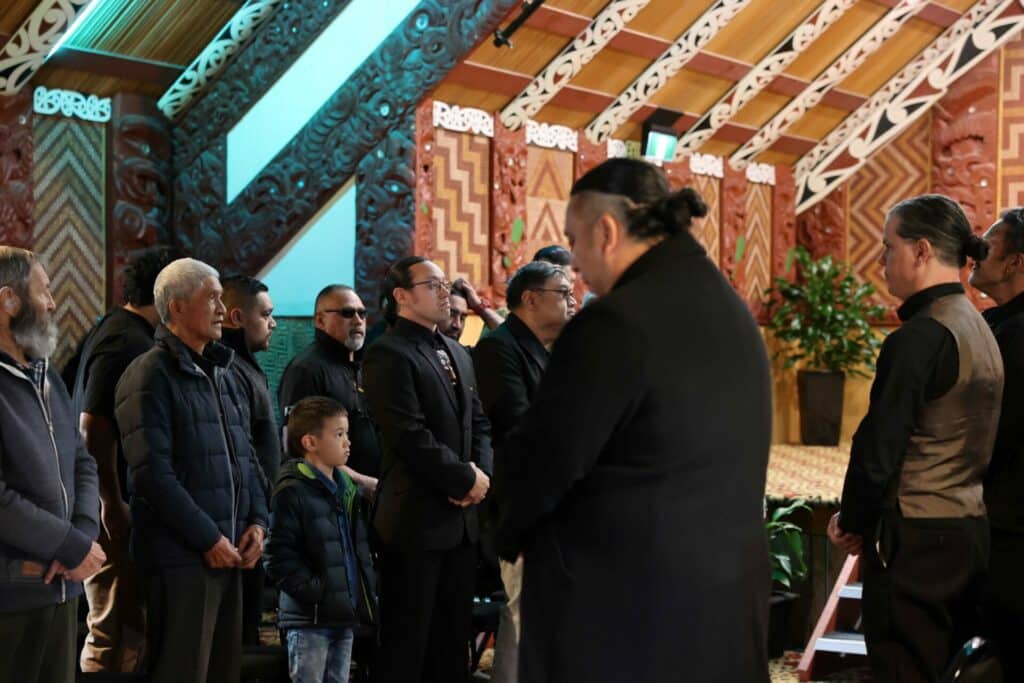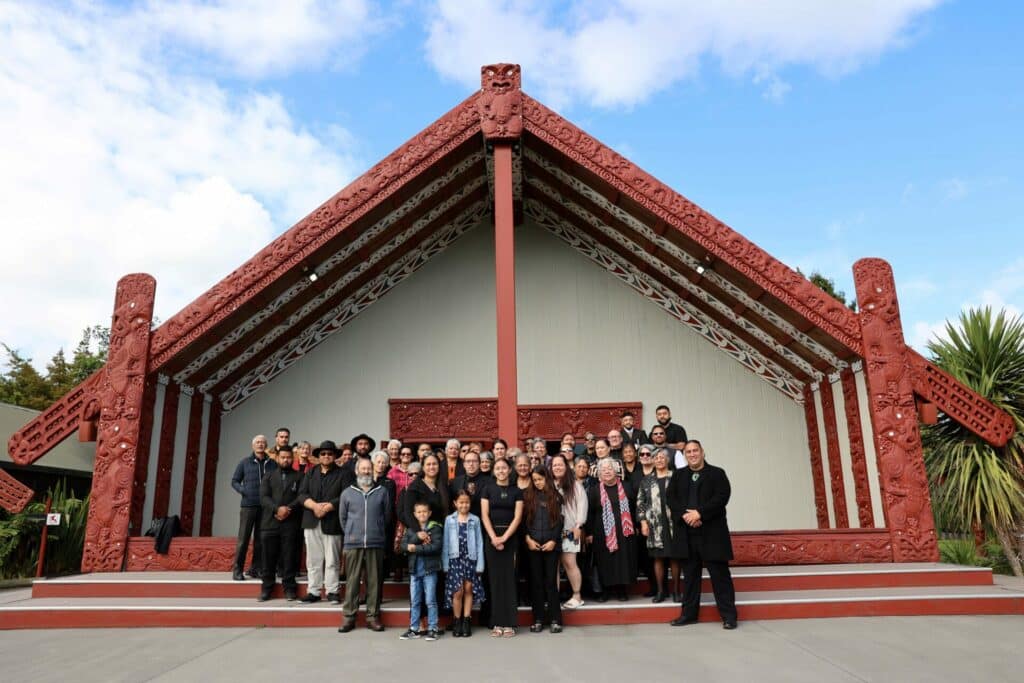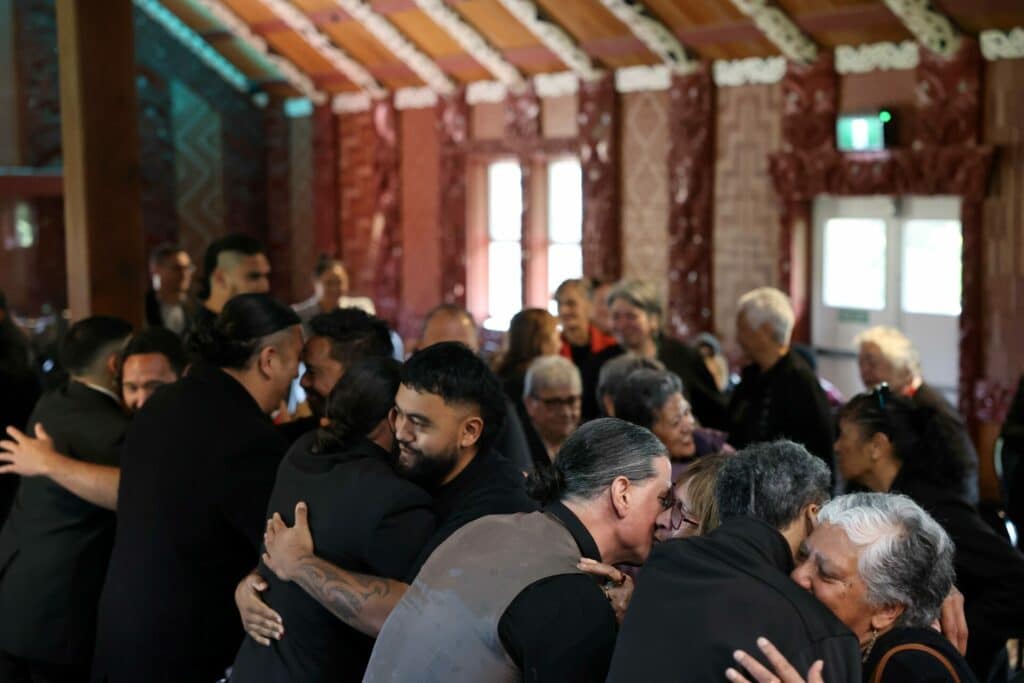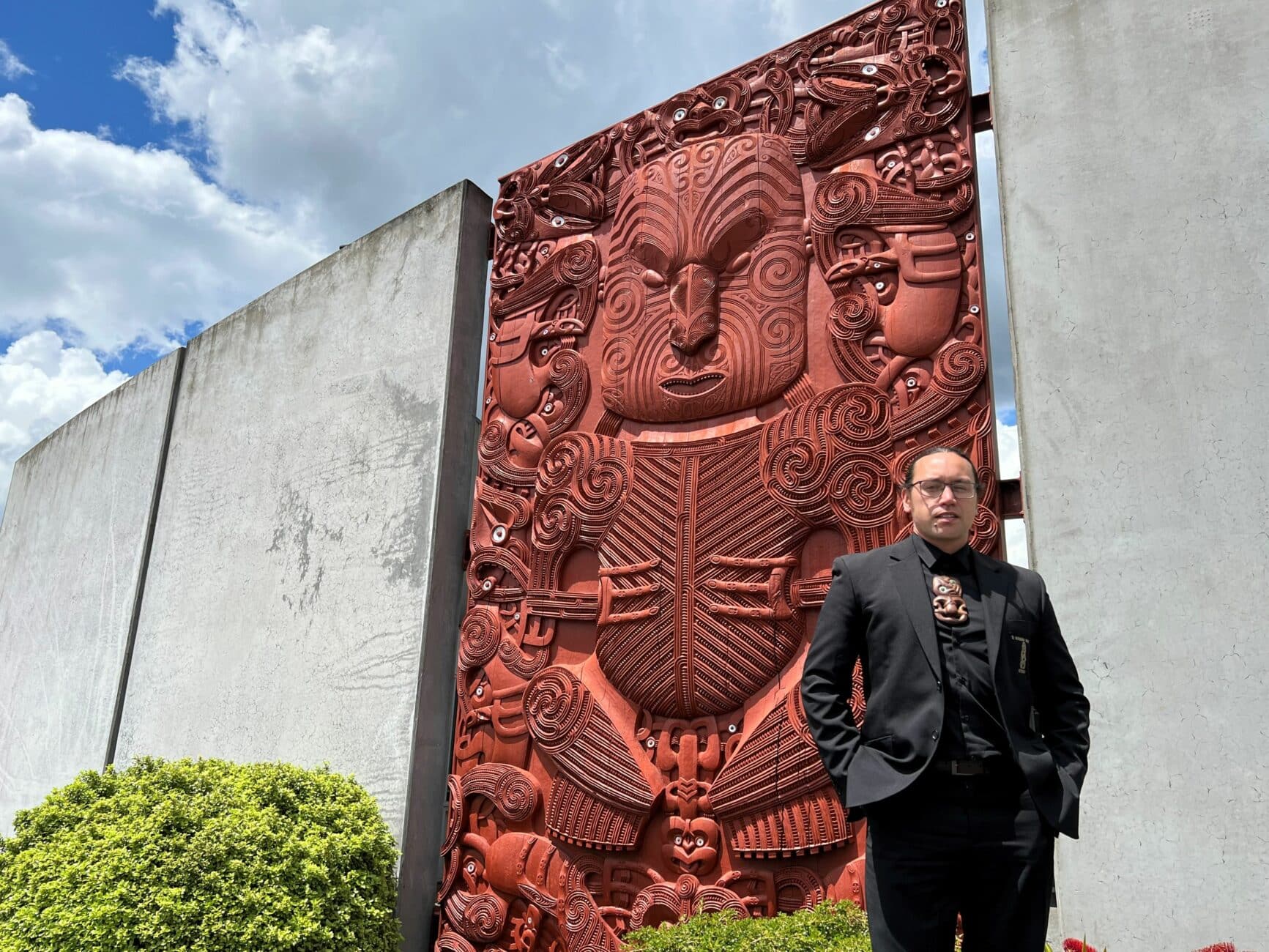Te Puia | The New Zealand Māori Arts & Crafts Institute held a whakatau on Monday for its new Tumu Whakairo Rākau (Head of the Wood Carving School) Grant Hamarama Smith Marunui (Ngāti Hurungaterangi, Ngāti Te Kahu, Ngāti Rangiteaorere, Ngāti Rongomai, Ngāti Manawa and Rangitāne ki Manawatu, Ngāti Apa ki te Rā Tō, Ngāti Kuia).
The timing of this appointment is significant as NZMACI looks to acknowledge the milestone of 60 years since the New Zealand Māori Arts and Crafts Institute Act (1963) came into force (now the New Zealand Māori Arts and Crafts Institute Vesting Act 2020).
New Zealand Māori Arts & Crafts Institute (NZMACI) general manager Eraia Kiel says Marunui graduated from NZMACI in 2014 and he’s seen him go from strength to strength.
“Grant brings another āhua to whakairo rākau (wood carving) in that he is a humble young man and a highly talented individual.
“He’s been able to branch out from NZMACI and acquire some new skills and knowledge that he’ll bring back to the wānanga.

Whānau, Te Puia | NZMACI staff and tauira (students) gathered during the pohiri (welcoming) of Grant Marunui.
“He will be a key part of our senior leadership team helping to bring to life our cultural strategy to lead NZMACI into the future. He has the mana and respect from his peers.”
Kiel explains that there is some important succession happening here, with Marunui carrying on from previous Tumu Whakairo Rākau that he was a student under, including Albert Te Pou, James Rickard and Clive Fugill.
Marunui says he feels privileged and honoured to have been offered this position.
“With the support of my masters who taught me, I intend on supporting our pouako (tutors) and tauira (students) however I can, to ensure that we continue to maintain the high level of carving that our masters set for us.”
Significant projects Marunui has worked on include leading and designing the carving of the three pou whakairo on the exterior of NZMACI – the biggest carved pou in New Zealand weighing 2300kg each and standing up to 7m tall.
Carved from tōtara, each pou recognises a prominent carving style from the Te Arawa tribal area as examples of the finest works from Ngāti Whakaue, Ngāti Pikiao and Ngāti Tarāwhai. He also worked alongside Albert Te Pou to carve the kauri waharoa at the front of Te Puia | NZMACI.

Proud whānau, close friends and Te Puia | NZMACI staff who were in attendance of the pohiri for Grant Marunui gather outside of Te Aronui a Rua.
Kiel says from that perspective Marunui has made his mark in terms of some of the most significant on-site features of the organisation.
“That speaks a lot about who he is and the mana of the man – it’s very fitting to now have him return and take on this highly prestigious position,” Kiel says.
Marunui is coming from his own business Te Taonga Māori Art, which was based at Scion – the Crown Research Institute for Forestry, fostering an integration of matauranga and science. Marunui shared his knowledge and was also provided Scion resources, technology and wood, while working with scientists and technicians.
Marunui’s recent carvings for CNI Iwi Holdings Ltd, Rotorua Lakes Council, and Kānoa – Regional Economic Development & Investment Unit of a Kūwaha and three Pou on Tītokorangi Drive have been highly impactful. They share the whakapapa, genealogical histories of Marunui’s hapū – Ngāti Hurungaterangi, Ngāti Taeotu, Ngāti Te Kahu (Ngā Hapū e Toru o Ngāti Whakaue), tangata whenua of Tītokorangi. The Kūwaha of Tuteata was carved with Tōtara from a Scion project with Te Taitokerau.
“When you see Grant’s work, you know straight away that’s NZMACI. There’s no if’s, but’s or maybes.
“He fulfills and brings to life the saying: He toi whakairo, he mana tangata. Where there is artistic excellence there is human dignity.”
The timing of Marunui’s appointment is significant as NZMACI looks to acknowledge the milestone of 60 years since the New Zealand Māori Arts and Crafts Institute Act (1963) came into force in December, 1963. While this part of history will be recognised, it is also important to acknowledge that Parliament enacted the New Zealand Māori Arts and Crafts Institute Vesting Act in 2020 with mana whenua owners of Te Puia | NZMACI through the Te Puia NZMACI Limited Partnership. The partners are Wāhiao Tūhourangi o Whakarewarewa, the Pukeroa Oruawhata Trust, and Ngāti Hurungaterangi, Ngāti Taeotū, and Ngāti Te Kahu o Ngāti Whakaue. Vesting meant that Te Puia | NZMACI came into iwi ownership.
Based in Rotorua, the New Zealand Māori Arts and Crafts Institute (NZMACI) is the home of the national schools of wood carving, stone and bone carving and weaving.
As a recipient and guardian of a strong nationally focused cultural legacy, NZMACI has been able to position itself at the forefront of Māori cultural representation, locally, nationally and internationally.
The Act reinforces this foundation and is unique internationally in its explicit recognition of the rights of indigenous peoples to the preservation and practice of their traditional arts, crafts and culture.

Whānau gathered in Te Aronui a Rua whare following the conclusion of the pohiri (welcoming) for Grant Marunui.
The New Zealand Māori Arts and Crafts Institute Vesting Act (2020) identifies six functions of the Institute:
- encourage, foster, and promote ahurea and toi Māori (culture and Māori arts) of New Zealand.
- provide training for the iwi of New Zealand, including in whakairo rākau (carving) and raranga (weaving).
- make grants to enable persons to study, train, and gain experience in creating Māori arts and crafts or any other matter approved by the Partnership.
- confer diplomas or certificates on persons who have undertaken training or gained qualifications in Māori arts and crafts or Māori culture generally.
- provide and support demonstrations, exhibitions, and tours of toi Māori and toi whakaari Māori (performing arts) of New Zealand.
- provide for the sustainable development of scenic and tourist attractions in the Rotorua district and elsewhere.
